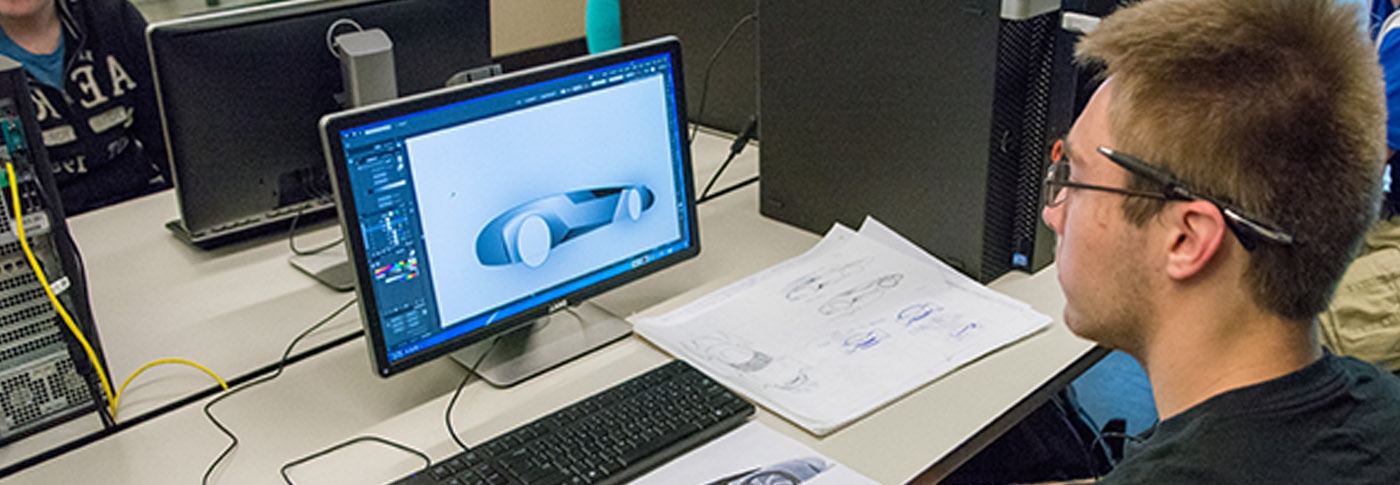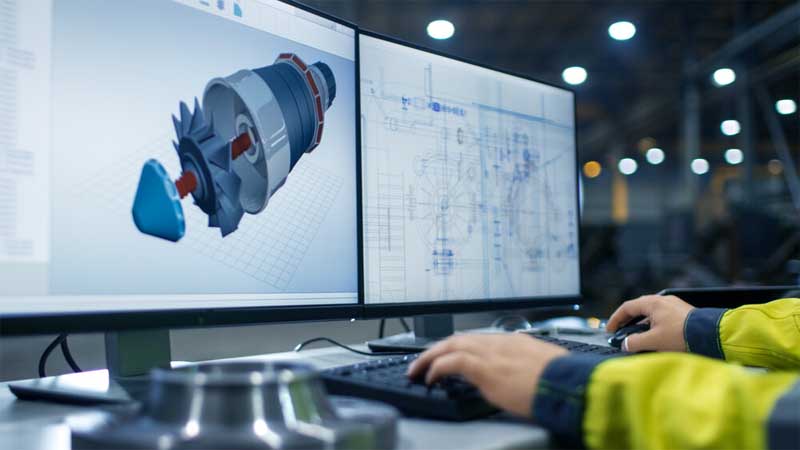Table Of Content

The height of the item (i.e., thickness or depth) at each place is commonly depicted for objects of this type using a contour map. Yes, numerous educational institutions and software companies offer CAD certificate programs. These programs typically cover fundamental concepts, software tools, and real-world applications of CAD. Certifications can demonstrate a level of competency and professionalism in computer-aided design and are often favored by employers. CAD (computer-aided design) is a technology commonly used in design to create detailed, precise and interactive models of products. Stands for "Computer-Aided Design." CAD is the use of computers to create 2D and 3D designs.
What are the Different Types of Computer-Aided Design?
CAD software can be used to create two-dimensional (2-D) drawings or three-dimensional (3-D) models. 2D/3D hybrid CAD software offers workflow flexibility and diversity by combining the strengths of 2D and 3D modeling methodologies. For businesses like architecture, in which both 2D drawings and 3D models are necessary for efficient communication and decision-making, this kind of computer-aided design is perfect. The goal of computer-aided design (CAD) is to replace manual drafting techniques with a more efficient way to create accurate and detailed design representations.
What are Large Language Models? Definition from TechTarget - TechTarget
What are Large Language Models? Definition from TechTarget.
Posted: Fri, 07 Apr 2023 14:49:15 GMT [source]
Architecture
CAD/CAM (computer-aided design/computer-aided manufacturing) is software used to design products such as electronic circuit boards in computers and other devices. Xometry makes no representation or warranty of any kind, be it expressed or implied, as to the accuracy, completeness, or validity of the information. Buyers seeking quotes for parts are responsible for defining the specific requirements for those parts. Parametric CAD, or parametric computer-aided design, is a design approach in which models are created based on defined parameters and relationships between them. Designers use parameters to represent dimensions, angles, and other features, adding constraints to maintain relationships within the model.
What is 3D (three dimensions or three-dimensional)? - Definition from TechTarget - TechTarget
What is 3D (three dimensions or three-dimensional)? - Definition from TechTarget.
Posted: Thu, 07 Apr 2022 01:29:20 GMT [source]
The 6 Main Types of FDM 3D Printer Explained
As you can see, it’s possible to land a career in computer-aided design with just some postsecondary education and training under your belt. Manufacturing is an essential component of these industries, and as a result, CAD has played a significant role in improving and advancing each sector. Because of computer-aided design, more advanced and high-tech careers are also available to aspiring manufacturing professionals. In construction, every blueprint and drawing is a complex web of information, distilled into symbols and lines that determine the work executed onsite. “Being able to visualize something in 3D gives the design and construction team an idea of what the finished project should look like,” said Cylwik.
CAD in Mechanical Engineering
3D CAD includes computer-aided manufacturing (CAM), which involves the actual manufacturing of three-dimensional objects. There are many types of CAD software out there, and while they all operate differently, all are based on geometry. Every CAD program has X (horizontal), Y (vertical), and Z (depth) coordinates which allow users to create 2D or 3D models. CAD programs typically use either vector-based graphics or raster graphics to represent drawings and models. Originally software for CAD systems was developed with computer languages such as Fortran, ALGOL but with the advancement of object-oriented programming methods this has radically changed.
With continued innovation and development, CAD applications are expected to become even more powerful and essential in a wide range of industries. Initially, CAD systems were simple 2D drawing programs, but over time, they evolved to become more sophisticated and capable of handling 3D models. The introduction of 3D solid modeling in the 1990s revolutionized the industry, allowing designers to create complex shapes and structures more easily. CAD Plant 3D makes offers modern 3D design solutions for plant designers and engineers.
CAD enables designers to conceptualize, visualize, and analyze complex designs before production, streamlining the entire development process. A program that runs on Microsoft Windows, SolidWorks Premium has powerful 3D design capabilities. While it can be used to create 2D designs, the 3D-related tools are what make it so valuable for mechanical engineers and designers. In the 1970s and 1980s, CAD became more sophisticated as computers became more powerful and user-friendly. These programs offered a wider range of tools and features and allowed designers to create more detailed, interactive models of user interfaces. As a result, designers began to create better user experiences because they could test and validate design ideas more effectively.
What is a CAD Certificate?
Typical modern parametric feature-based modeler and freeform surface systems are built around a number of key C modules with their own APIs. A CAD system can be seen as built up from the interaction of a graphical user interface (GUI) with NURBS geometry or boundary representation (B-rep) data via a geometric modeling kernel. A geometry constraint engine may also be employed to manage the associative relationships between geometry, such as wireframe geometry in a sketch or components in an assembly.
Furthermore, many CAD applications now offer advanced rendering and animation capabilities so engineers can better visualize their product designs. 4D BIM is a type of virtual construction engineering simulation incorporating time or schedule-related information for project management. Computer-Aided Design is a crucial technology used in various industries, including engineering, architecture, and fashion design.
This allows for more efficient work, which in turn means companies can employ less designers, making for an all-round quicker and more affordable design process than traditional methods. The early origins of CAD can be traced back to the 1940s and 50s, when various developments made in computer software widened the design-related capabilities of early computers. The term “computer-aided design” was coined in 1959 by MIT researcher Douglas T. Ross. As well as expensive paid-for CAD software used by professionals, there are also free programs that are better suited to students and hobbyists.
At its simplest level, it is a 2D wireframe package that is used to create engineering drawings. This has however, over the last decades, been overtaken by 3D parametric feature-based modeling. Component forms are created either using freeform surface modeling or solid modeling or a hybrid of the two. These individual components are then assembled into a 3D representation of the final product; this is called bottom-up design. The features of this software enable the creation of intricate furniture that is frequently more intricate than specialized furniture design tools.

It helps users create designs both 2D and 3D designs to better visualize construction. By utilizing a CAD system, clothing manufacturers have significantly shortened production times. Additionally, CAD lets designers see clothing designs on virtual figures in various colors and shapes, saving time by reducing the need for later revisions to prototypes and samples. One of the best systems for helping with the design and production of dental treatment-related elements right now is CAD technology.

Design engineers may plan and create their work on a computer screen with CAD, print it, and save it for upcoming revisions. Because the machines were so expensive when CAD was first developed, it was not precisely a viable business option. Interior designers use CAD to optimize space, experiment with different layouts, and visualize the final look in 3D before the physical implementation begins. The CAD model becomes a valuable communication tool between architects, interior designers, and clients. The software allows them to create detailed and accurate architectural plans, 3D models, and blueprints.
Parametric design is a powerful feature that allows designers to create designs that can be easily modified and adapted for different purposes. By creating a series of parameters that define the design, designers can quickly make changes to the design without having to recreate it from scratch. This feature saves time and allows for greater flexibility in the design process.
2D CAD also includes drawings, such as sketches and mockups, which are common at the beginning of the design process. 2D CAD models are flat, two-dimensional drawings and provide the information, such as dimensions and layouts, needed to reproduce or build the subject. These 2D models are commonly used in industries such as architecture, civil engineering, automotive, interior design, landscaping, cartography and fashion. Some examples include Autodesk's® BioCAD and Mimics Innovation Suite (by Materialise) for Medical 3D Printing. The future of CAD technology includes advancements in cloud-based CAD software, integration with virtual reality and artificial intelligence, and improved collaboration tools.
For example, While AutoCAD is the industry leader and is used by professionals across a wide range of sectors, Blender is a high quality free CAD software that is available to anyone. Since the introduction of blueprinting, there have been numerous innovations, but none more important than the creation and advancement of computers. Blueprinting is still widely used in various applications, but the original blueprint became obsolete primarily in the 1950s.

No comments:
Post a Comment